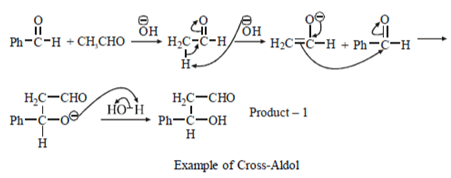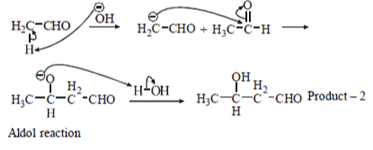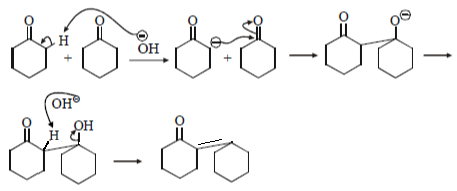Chemistry Exam > Chemistry Tests > Test: Electrophiles and Nucleophiles - Chemistry MCQ
Test: Electrophiles and Nucleophiles - Chemistry MCQ
Test Description
10 Questions MCQ Test - Test: Electrophiles and Nucleophiles
Test: Electrophiles and Nucleophiles for Chemistry 2025 is part of Chemistry preparation. The Test: Electrophiles and Nucleophiles questions and answers have been prepared
according to the Chemistry exam syllabus.The Test: Electrophiles and Nucleophiles MCQs are made for Chemistry 2025 Exam.
Find important definitions, questions, notes, meanings, examples, exercises, MCQs and online tests for Test: Electrophiles and Nucleophiles below.
Solutions of Test: Electrophiles and Nucleophiles questions in English are available as part of our course for Chemistry & Test: Electrophiles and Nucleophiles solutions in
Hindi for Chemistry course.
Download more important topics, notes, lectures and mock test series for Chemistry Exam by signing up for free. Attempt Test: Electrophiles and Nucleophiles | 10 questions in 20 minutes | Mock test for Chemistry preparation | Free important questions MCQ to study for Chemistry Exam | Download free PDF with solutions
Test: Electrophiles and Nucleophiles - Question 1
Which of the following is not true about nucleophile?
Detailed Solution for Test: Electrophiles and Nucleophiles - Question 1
Test: Electrophiles and Nucleophiles - Question 2
Which of the following statement is incorrect about electrophiles?
Detailed Solution for Test: Electrophiles and Nucleophiles - Question 2
Test: Electrophiles and Nucleophiles - Question 3
Which halogen nucleophile is weakest in polar, aprotic solvents?
Detailed Solution for Test: Electrophiles and Nucleophiles - Question 3
Test: Electrophiles and Nucleophiles - Question 4
In addition of halogen (Bromine) to an alkene, how can we isolate a bromonium in the reaction?
Detailed Solution for Test: Electrophiles and Nucleophiles - Question 4
Test: Electrophiles and Nucleophiles - Question 5
Which of the following nucleophile can be used for partial enolization 1,3-Dicarbonyl compound?
Detailed Solution for Test: Electrophiles and Nucleophiles - Question 5
Test: Electrophiles and Nucleophiles - Question 6
Which of the following is not an electrophile?
Detailed Solution for Test: Electrophiles and Nucleophiles - Question 6
Test: Electrophiles and Nucleophiles - Question 7
What will be the number of products (excluding stereoisomers) in the given reaction?
C6H5CHO + CH3-CHO + NaOH → Product
Detailed Solution for Test: Electrophiles and Nucleophiles - Question 7
Test: Electrophiles and Nucleophiles - Question 8
Which of the following is not an electrophile?
Detailed Solution for Test: Electrophiles and Nucleophiles - Question 8
Test: Electrophiles and Nucleophiles - Question 9
Where will nucleophile (-OH) will attack to form which of the following the product X?

Detailed Solution for Test: Electrophiles and Nucleophiles - Question 9
Test: Electrophiles and Nucleophiles - Question 10
In the given molecule where will electrophile will attack?

Detailed Solution for Test: Electrophiles and Nucleophiles - Question 10
Information about Test: Electrophiles and Nucleophiles Page
In this test you can find the Exam questions for Test: Electrophiles and Nucleophiles solved & explained in the simplest way possible.
Besides giving Questions and answers for Test: Electrophiles and Nucleophiles, EduRev gives you an ample number of Online tests for practice
Download as PDF























